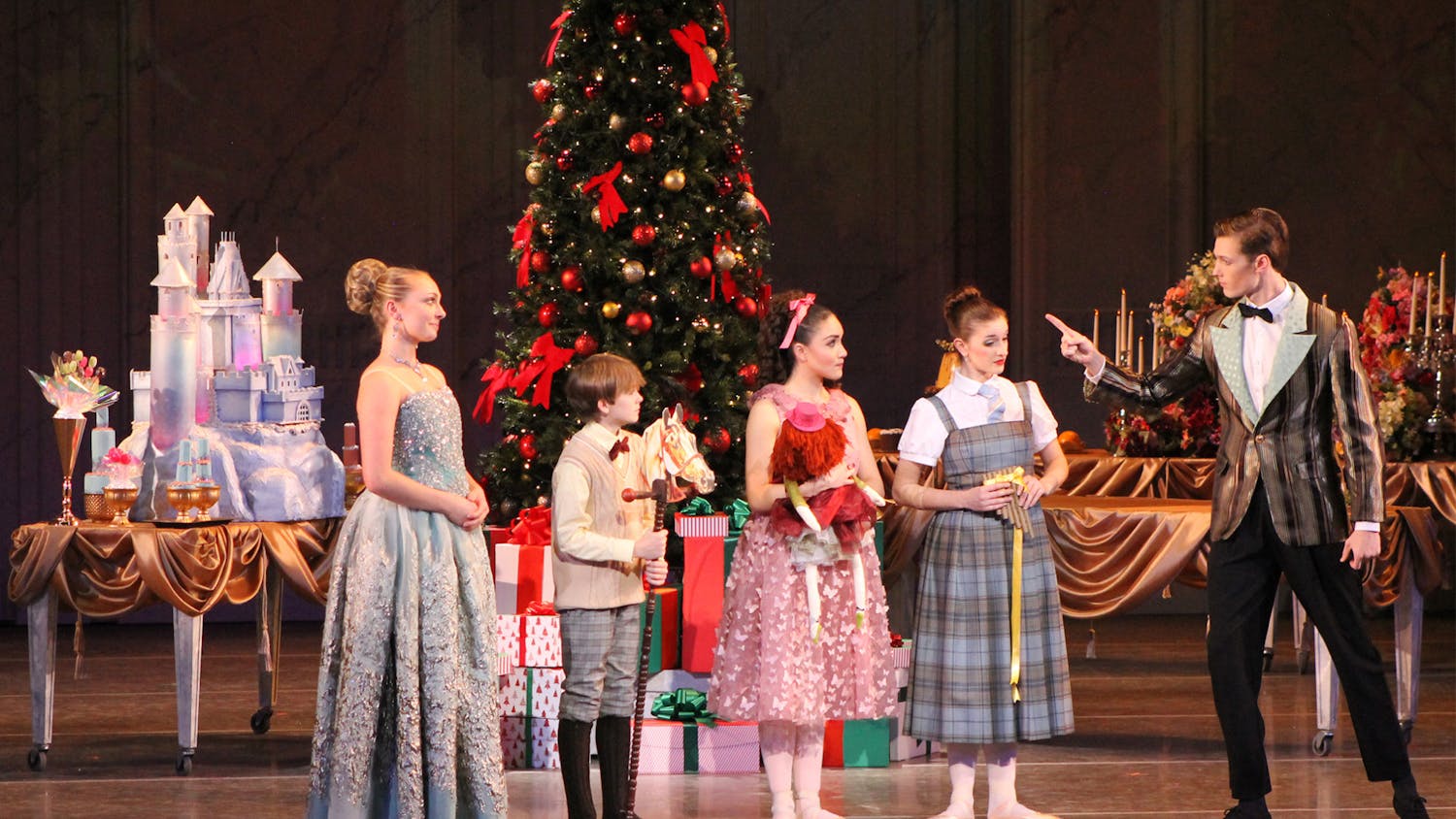A man with silver hair and black tattoos stood before a small crowd as he beatboxed, making a greasy-haired biker turn back on his route, sit down on the warm asphalt and listen.
The man in front of the microphone had a story to tell, and through the power of his voice he took his audience on a journey to a village in Sierra Leone.
As part of the 35th annual Forth Street Festival, the Bloomington Storytellers Guild touted tales to curious college students, agile children and tie-dye clad adults on Saturday. They wove messages from urban legends and mythical tales into theatrical narratives.
Formed in 1974, the Guild was founded to keep the ancient, oral tradition a thriving art within the Bloomington community.
The Guild is composed of members who have a passion for stories. Every month, the storytellers meet to study and craft their tales into pieces that can amuse, entertain and enrich listeners.
While storytelling can take form around the flickering flames of a campfire or on the lumpy feather pillows of giggling girls at a sleepover, the practice of storytelling is incorporated into teaching methods in a variety of ways.
Guild Coordinator Ginny Richey began storytelling for her job. Working with troubled teens in inner-city Louisville, she needed a way to make a quick and positive connection between hostile groups of school children. Storytelling, she said, was the way to do it best.
“Storytelling is a shared experience between the teller and the listener,” Richey said. “In the teller’s mind, they have a vision that is more than just the words that come out. Then the listener creates a world in their own mind that moves past just the words they
hear.”
Storyteller Stephanie Coleman, 47, is the children’s librarian at the Monroe County Public Library. She tells personal stories that range from her childhood experiences growing up on a farm to tales about Hoosiers involved in World War II.
This weekend, she told a story with a “not so very happy ending.” As she pretended to practice voodoo magic, waving her hands around to concoct a death-producing elixir, her lyrical voice sang the disturbing tale of a husband and wife who wanted a divorce after taking a trip to Haiti.
Women laughed and listened with their eyes wide open as Coleman engaged the crowd with her articulation and emotion.
While her audience this weekend was mostly middle-aged women, Coleman initially wanted to learn storytelling as a motivational tool that would help her encourage children’s desire to read.
“It’s important because there is a need for face-to-face connection, where one person is telling a story to others,” Coleman said. “It’s not important just because of the rise of technology, but more because it’s a unique way to convey the importance of articulation, setting and format.”
One memory Coleman recalled was of going to an elementary school to tell stories to a group of students. They would come up and tell her, “I remember you! You told me that story,” and she says friendships were formed.
Storyteller Patty Callison, a 62-year-old librarian originally from Kansas, piped up Sunday with a tale told in an Irish accent. At times, she closed her eyes and shook her head in such rage that her face turned a rosy red. Between sudden outbursts of laughter from the crowd, passersby would set down their plates of Indian curry to listen to Callison’s whimsical and comical tale.
Later, she pulled a “Ready-to-Tell Tales” book out of her reusable red and green bag and explained how she uses stories like those out of the book to get inspiration.
“The bones are there and you keep in the things you’re good at and throw out the things you can’t pronounce,” Callison said.
She said her favorite part of storytelling is getting a reaction from the audience.
“Storytelling is about enchantment,” Callison said. “When enchantment happens, it makes the audience forget that they’re sitting in a chair in the middle of Fourth and Dunn. A story can allow the mind to go somewhere else. Wherever I go, everyone else gets to come with me.”
Storytellers Guild tell soul-fulfilling tales
Get stories like this in your inbox
Subscribe





